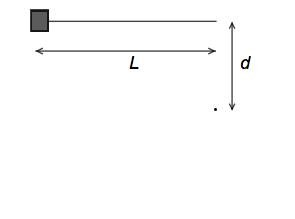IB HL Physics Field strength and potential
/A tutorial sheet on the HL concepts of field strength and potential is given below.
- Define the term electric potential.
- Define the term electric field strength.
- Is electric field strength equal to minus the change in potential divided by the change in displacement?
- What is the relationship between electric field (E) and electric potential (V)?
- True or false. If the electric potential at a point is zero then the electric field strength at this point must be zero.
- True or false. If the electric field strength at a point is zero then the electric potential at this point must be zero.
- True or false. The electric potential at the midpoint of the line joining charges +Q and +Q is a local minimum.
- True or false. The electric potential at the midpoint of the line joining charges +Q and -Q is a global maximum.
- Point charges +Q are placed at the vertices of an equilateral triangle of side L. Find the electric potential and field strength at the centre of the triangle.
- Four point charges +Q are placed at the corners of a square of side L. A point charge -q is placed at the centre of the square. Describe the movement of the charge -q if it (a) pushed a small amount towards a corner charge, and b) pushed a small amount towards the midpoint of a side of the square.



